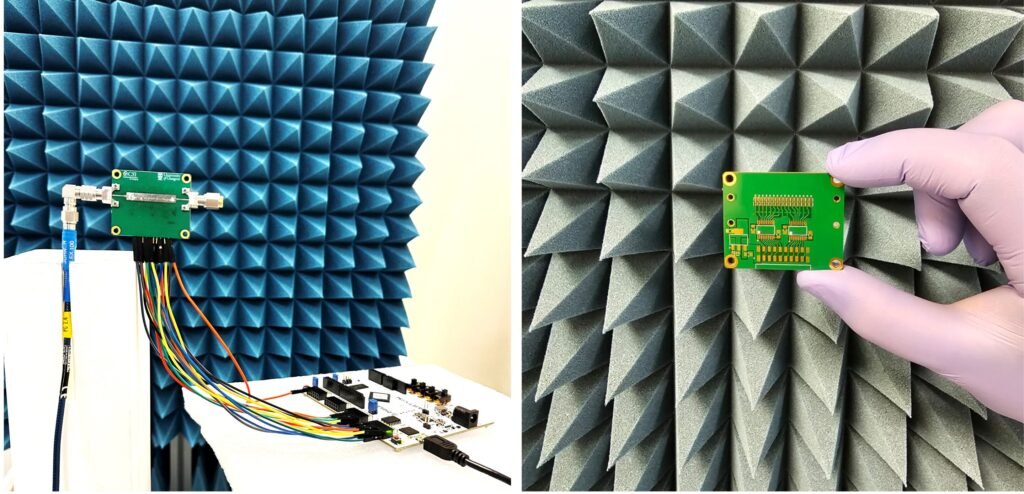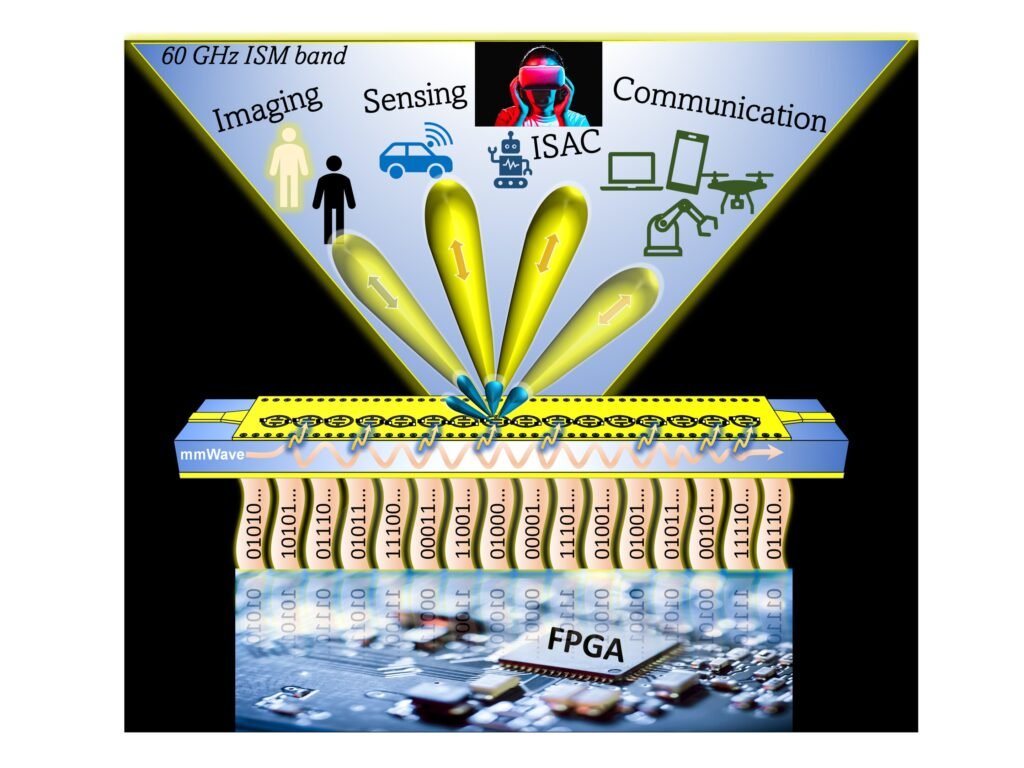The wireless communication technology 6G is still in development. A recently built antenna prototype can be used on these networks.
Source: TechXplore
A team led by researchers from the University of Glasgow has developed an innovative wireless communications antenna that combines the unique properties of metamaterials with sophisticated signal processing to deliver a new peak of performance.
In a paper published in the IEEE Open Journal of Antennas and Propagation, titled “60 GHz Programmable Dynamic Metasurface Antenna (DMA) for Next-Generation Communication, Sensing, and Imaging Applications: From Concept to Prototype,” the researchers showcase their development of a prototype digitally coded dynamic metasurface antenna, or DMA, controlled through high-speed field-programmable gate array (FPGA).
Their DMA is the first in the world designed and demonstrated at the operating frequency of 60 GHz millimeter-wave (mmWave) band—the portion of the spectrum reserved by international law for use in industrial, scientific, and medical (ISM) applications.
The antenna’s ability to operate in the higher mmWave band could enable it to become a key piece of hardware in the still-developing field of advanced beamforming metasurface antennas.

It could help future 6G networks deliver ultra-fast data transfer with high reliability, ensuring high-quality service and seamless connectivity, and enabling new applications in communication, sensing, and imaging.
The DMA’s high-frequency operation is made possible by specially designed metamaterials—structures that have been carefully engineered to maximize their ability to interact with electromagnetic waves in ways that are impossible in naturally occurring materials.

Professor Qammer H. Abbasi, co-director of the University of Glasgow’s Communications, Sensing and Imaging Hub, is one of the paper’s lead authors. He said, “In recent years, DMAs have been demonstrated by other researchers around the world in microwave bands, but our prototype pushes the technology much further, into the higher mmWave band of 60 GHz. That makes it a potentially very valuable stepping stone towards new use cases of 6G technology and could pave the way for even higher-frequency operation in the terahertz range.”
The capabilities of the DMA design could find use in patient monitoring and care, where it could help directly monitor patients’ vital signs and keep track of their movements.
It could also enable improved integrated sensing and communications devices for use in high-resolution radar and to help autonomous vehicles like self-driving cars and drones safely find their way around on the roads and in the air.
The improved speed of data transfer could even help create holographic imaging, allowing convincing 3D models of people and objects to be projected anywhere in the world in real time.



